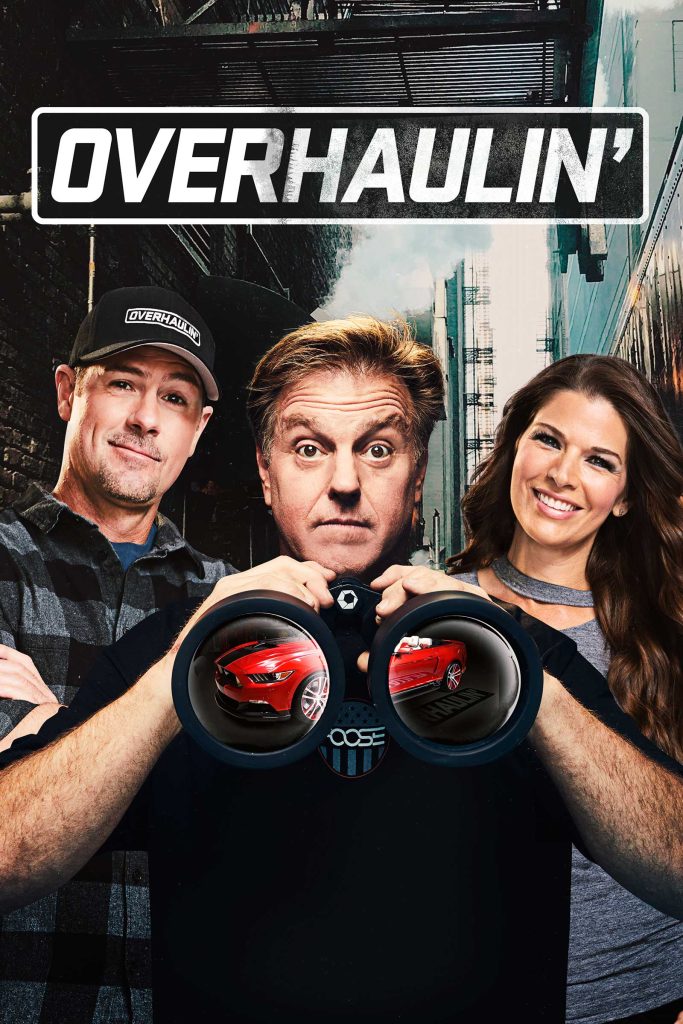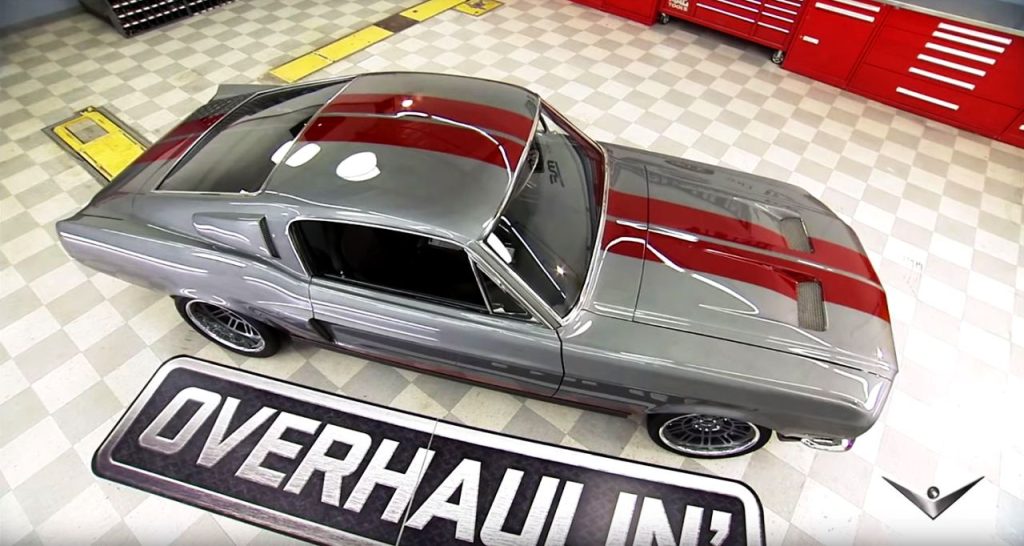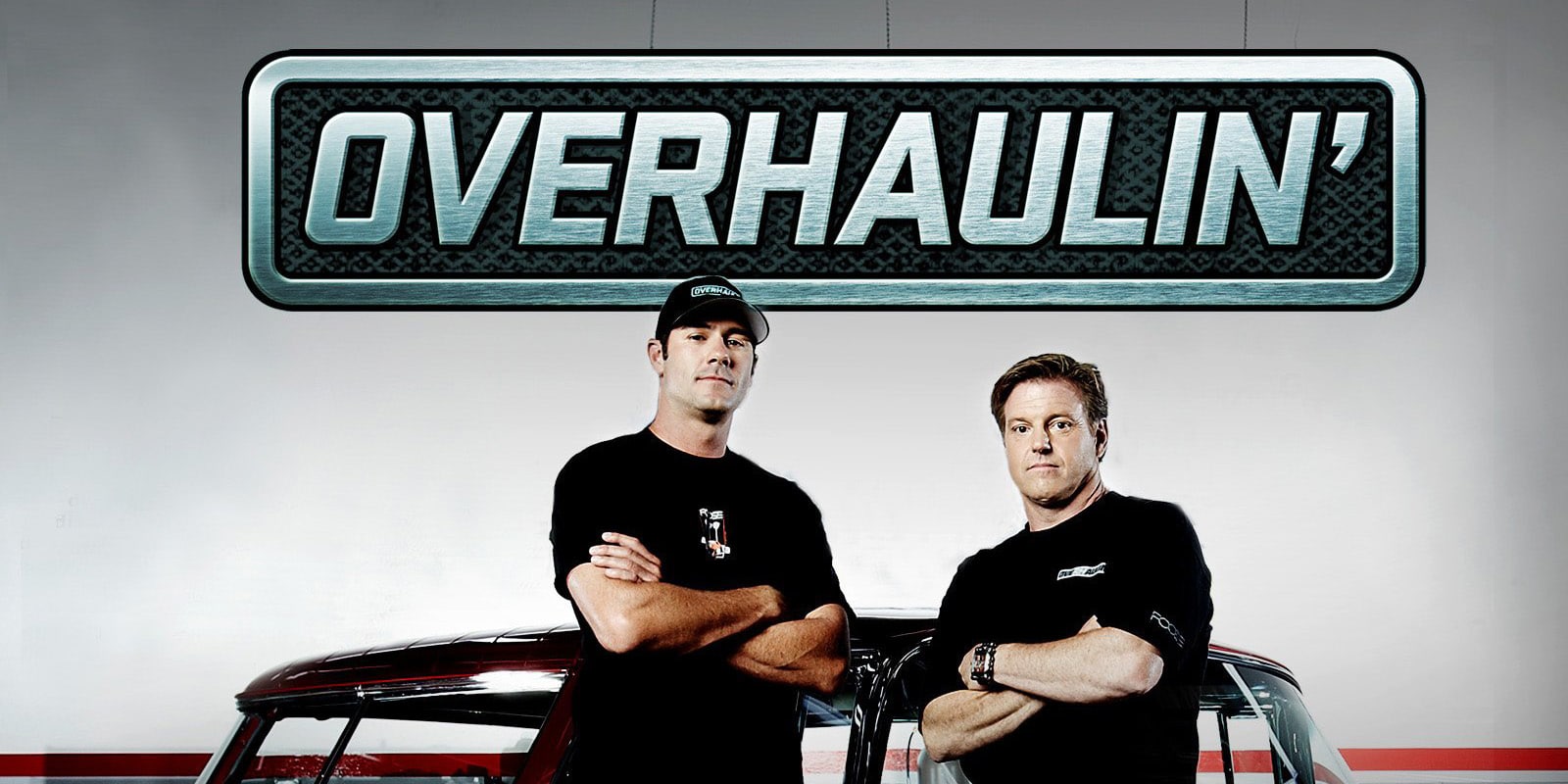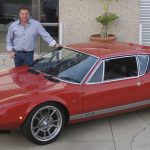Of all the automotive-themed reality television series that debuted in the early 2000s, it was only “Overhaulin,” that was canceled and rebooted thrice in the span of 16 years. There was a time when it was one of the most-viewed TV shows on cable television, and its main star, Chip Foose, became one of the most recognized men in the automobile designing and construction industry. The TV networks couldn’t help but give it a reboot after it went into hibernation for a few years. It was first aired on the TLC network in 2004 until 2006; Discovery Channel’s Velocity then rebooted it in 2008, but canceled it again after a season. It was back on TV in 2012 and had four seasons before it was terminated in 2015, then The TV show was then given another life in 2019 but it officially ended in 2020 after it aired 12 episodes.
Chip Foose, the man behind the success of “Overhaulin’”
Only a few men in automotive designing have been given the opportunity to show their prowess through reality-TV, and become legendary icons – automobile designer Chip Foose was one of them.
What should @chipfoose draw next? https://t.co/NB67cCDDpg
— Hagerty (@Hagerty) March 17, 2021
Some of his iconic car designs were featured in box-office hit movies such as Pixar’s “Cars,” “Blade Runner,” and “Gone in 60 Seconds.”
Got the car bug from his father
His interest in cars developed because of his father’s business, Project Design. His parents had four children, but being the only son, he would constantly tag along with his father, Sam Foose, during the weekends when he was still a toddler. At the young age of seven, he was already moving around his father’s shop trying to learn things, doing paint jobs, and running errands. He met several important people in the automobile industry, and was encouraged by some of them including Alex Tremulis, a former Ford and Tucker designer, to pursue a career in design.
Education – Art Center College for Design
Chip graduated from Art Center College for Design in Pasadena, California, but not without encountering several hardships, including dropping out because it was too expensive for him to continue.
He worked with his father, and also accepted freelance jobs from Stehrenberger-Clenet Design, which was later rebranded as AHSA Corp. Later on, he realized the value of completing his education, so he went back to school, persuaded partly by his girlfriend motivating him as she wouldn’t marry him until he earned his degree.
His years with Boyd Coddington
After he graduated from college, he planned a different career path and bought out his remaining contract with AHSA Corp. Chip started working for Boyd Coddington, a known hot rod designer and owner of the Boyd Coddington Hot Rod Shop. After two years, he went for an interview with two automobile giants, Ford and VW; he preferred working for Ford and was about to pack his bags to leave for Dearborn when Boyd made an offer he couldn’t refuse, so he stayed with the company and found himself designing and building hot rods. It wasn’t really the career that he planned for himself but since he was still young then, he felt he had more time to explore the opportunities open to him.
https://www.instagram.com/p/CU-OOGIFmph/
Boyd expanded his business, but some of it didn’t work out so he filed for bankruptcy. At that time, Chip was spending his own money on the parts he needed to complete a project, so he realised that it was about time he left the company and established his own brand.
Built his own company, Foose Design in 1984
Foose Design was created in Santa Barbara, California in 1984, but Chip also worked for various people at the same time, to gain experience learning from the experts, as well as earning an income. He built an impeccable reputation for designing and building great hot rods in the automotive industry, but when he finally pursued his ultimate dream of having his own company, it still wasn’t without any controversies. He had a falling out with his former employer, because some of the people working for Boyd also resigned and then joined Chip at his new company – Boyd didn’t take it well, and held a grudge. Chip said that the only reason that their personal and business relationship ended was that Boyd didn’t want anything to do with him.
https://www.facebook.com/chipfoose/photos/4307481852621176
In 1997 at the age of 31, he was the youngest member to be inducted into the Hot Rod Hall of Fame at the 50th anniversary of Peterson’s Publishing. It was held at the annual Specialty Equipment Market Association or SEMA in Las Vegas, Nevada. In 1999, Chip relocated to Huntington Beach to widen his prospects; his company offered several automobile services such as creating graphics, illustrations, model making, and surfacing along with automobile construction and other related products.
“Overhaulin,” the reality-TV show
In total, the reality-TV show aired close to 140 episodes, including the specials spread throughout its 10 seasons aired on TLC, Velocity, and Discovery Channel networks.
The origins of the show
With his new company, he created the 0032 Roadster, inspired by the popular hot rod that he designed for Boyd Coddington called Boydster I and II, and won the top prize for America’s Most Beautiful Car Award in 2000.
People were starting to recognize his name and three years after that, he was featured in an automotive documentary aired on the TLC network. The main focus of the documentary was one of his unique creations, the modified 2002 Ford Thunderbird. The next thing the gearheads knew was that a new reality-TV series made its debut on 13 April 2004, called “Overhaulin.”
Chip’s Co-hosts and A-Team members
The “Overhaulin” series had a number of hosts who helped Chip present the show each episode over the years, including Chris Jacobs, who was with the show from the first season, and would always return each time the show was rebooted. Other co-hosts were Courtney Hansen (2004-05), Adrienne Janic (2005-08 along with the reboots), Jessie Combs (2012-13), and Arianny Celeste (2013-15).
Chip was also supported by other people whom he fondly called his A-Team such as Andreas Somogyi, Ian Van Scoyk, Mark Oja, and Richard Waitas along with Skratch and Andy Stapp who were both with him from the start of the show.

The mark, the insiders, the prank, and a newly overhauled car
The premise of the show was a stroke of genius, as viewers were easily hooked from the get-go. The TV producers, Bud W. Brutsman and Susan B. Flanagan from the production company called BCI Communications, would review thousands of submissions from which they chose someone’s car to be overhauled by Chip and his A-Team. They staged scenarios in which the “insiders” would prank the selected car owner whom they called the “mark”, to ensure that the car would be secretly worked on for a week without interruption. There were times when they told the car owner that it was stolen, lost, or impounded by the police, but culminating when all of them would reveal a newly restored or customized car to the owner after a week.
The big question: Was the car customization free of charge?
Work on the car including parts and labor were given freely except, for the taxes associated with having a newly restored car.
The set-up with “Overhaulin” in which the producers have to choose winners out of the submitted applications was likened to the mechanics of popular game shows such as “The Price Is Right” or “Jeopardy.” Unless otherwise indicated, all local and state taxes associated with the prizes would be automatically paid by the selected contestants.
From the beginning, the producers would inform the “insiders” that after the restoration was completed on the car, the owners would be responsible for the increased value of the car under the rules of Internal Revenue Services (IRS). To ensure that the TV show wasn’t financially suffocated with the restoration costs of each car, sponsors and advertisers paid for all parts.
If one was to look at it from another perspective, at the end of the day, it’s the viewers who paid for all the restoration done to each car, as shows with high viewership ratings could command a higher rate for brand advertising or promotions.
Cancelations and Reboots from 2004 to 2020
In the history of reality-TV shows, fans were constantly shocked that “Overhaulin” was canceled but then rebooted several times. This was truly unheard of, since most TV executives would rather produce a spin-off series instead of rebooting the same show all over again. However, for some reason, producers couldn’t totally give up on the original premise and structure of “Overhaulin’”, quite possibly because Chip Foose along with his team changed the landscape of how automotive-themed shows were presented on TV, evidenced by many other shows that were later produced, inspired by their success and ingenuity.
People were left wondering why the TV show would just stop airing, and then come back after two years only to air one season, to be repeated again and again but with longer intervals, until it officially ended on 21 July 2020. Here’s a list of the possible reasons why this kept happening:
The “marks” or car owners need to pay hefty taxes
After Chip Foose and his team restored the car into its pristine condition, and in some cases added upgrades, the value of the finished product dramatically increased.
https://www.facebook.com/overhaulin/photos/3534903236524479
Initially, the car owners were most grateful as they couldn’t afford to have them renovated and customized, however, when taxes are calculated, the owners would often pay thousands of dollars, since a newly restored car in “Overhaulin” could be valued at the very least around $50,000. While the family or friends of the owners were informed about it beforehand, it had become a burden to some of them. In the end, instead of enjoying their newly restored cars, they ended up selling them to pay the taxes, although then profit from them as well.
Unsatisfied car owners
There were allegations that some of the parts used in restoring the cars were of low quality, as they came in exchange for advertising deals. Chip had a great reputation for designing as well as building cars, so this allegation should be taken with a grain of salt. Nobody had officially come forward to complain about, it but some rumors went around online community forums and social media. There were also stories about having to bring the cars to the shop to be fixed again. Other fans believed that these rumors only started when the viewers found out about the exchange deals with the suppliers.

Some people said that it wasn’t the parts that had a problem, but due to the eight-day deadline that they had in the show, some of the cars were not finely tuned. Whether these stories were accurate or not, the bottom line was that not all car owners were totally happy with their restored cars.
The same scripted drama gets old and repetitive
While the premise of the show was quite original for automobile-related reality-TV shows, as they pranked the car owners just to get the car from them, the whole staged scenario can wear out – it was initially great, but to use the same tricks over again, it came to a point that it wasn’t as entertaining as it had been. It didn’t help that some of the scripted drama was quite cringe-worthy.
The Chip Foose-Boyd Coddington conflict
It was common knowledge that Chip worked for Boyd Coddington for some time, which resulted in Chip designing some of the great cars in Boyd’s company. They had a great working relationship and had mutual respect for each other back then, so when Chip left Boyd’s company as it was having financial difficulties, Boyd took it in his stride, as Chip needed to look out for himself.
However, it became an issue when some of Boyd’s employees also left the company. It wouldn’t have been a huge deal as it was understandable, but when they left together and joined Chip’s company, Boyd didn’t like it at all. The old man felt that they’d conspired together and left him when he needed them the most. Boyd avoided any communication with Chip. However, when Boyd suffered from complications of diabetes, they were fortunately, able to resolve their differences before the old man died in 2008.
Chip’s legal troubles
In 2007, Foose Design released an announcement that effective immediately, they had ‘terminated all licensing and all business activities with Texas-based Unique Performance, Unique Performance Concepts, and related companies.’ Apparently, when Chip inked a deal with them, Unique had already accepted deposit money for the cars from the clients, expecting to receive Chip’s exclusive design such as the Foose Mustang Stallion. When the clients failed to receive them, they filed lawsuits not only against Unique Performance but also against Foose Design.
The money he earned from appearing in “Overhaulin” was spent mostly on legal fees from the lawsuits. His company tried to work something out with Unique Performance for eight months, but it proved to be a shady company. The Mustang Ranch owned by Unique was raided by law enforcement, as there were tips that most of the Mustangs there had fake VIN plates, and some even had the numbers scraped off. They found 61 vintage cars in different stages of construction and restoration. It was also reported that around $7 million was collected as deposits from the customers.
Low TV ratings
The common and most popular reason why a TV show was canceled was because of low ratings. It didn’t matter that the show had given the network a record-breaking viewership rating in the past, the moment it lost its audience and the numbers dipped to an uncomfortable percentage, expect it to be canceled. Most TV networks wouldn’t release any official explanation as to why a certain TV series would not be back for another season, and “Overhaulin” was no exception.
https://www.facebook.com/overhaulin/photos/3550478754966927
Television was run not just by creative people, but also by shrewd businessmen. Low viewership would mean low revenues, and the best solution was to simply eliminate the production costs. TV executives didn’t have a choice but to remove the TV show from its regular programming.
When Discovery Channel decided to reboot “Overhaulin’” again in 2019, it was promoted as the show’s final season before it would officially close its doors. Some TV insiders said that it was a great strategy to market another season after being gone for four years. Chip and his team wouldn’t feel as if it was a failure on their part if they couldn’t get a decent viewership percentage, since it was marketed as a goodbye season. However, if they suddenly hit the jackpot, they could easily just add another season. While there was no announcement of another season, whether it was due to the filming restrictions brought by the Covid-19 pandemic or it was truly the final season of the TV show, their loyal fans were happy that they were given the perfect closure, and that Chip Foose was able to properly say his farewell to his audience.











Leave a Comment